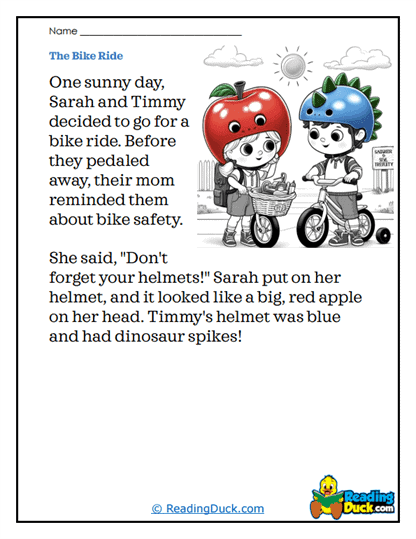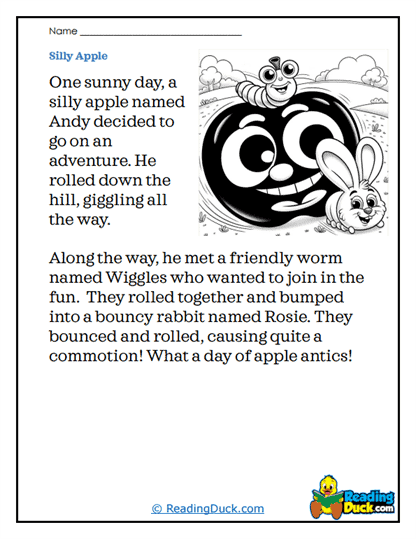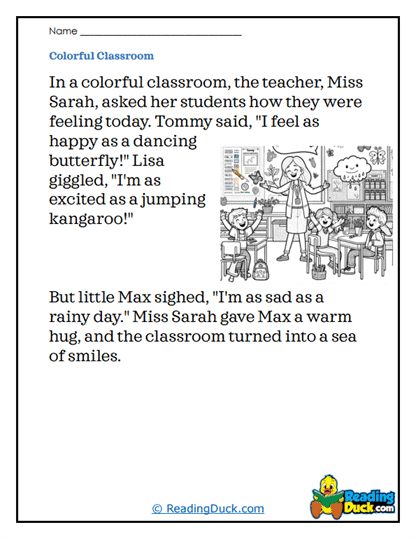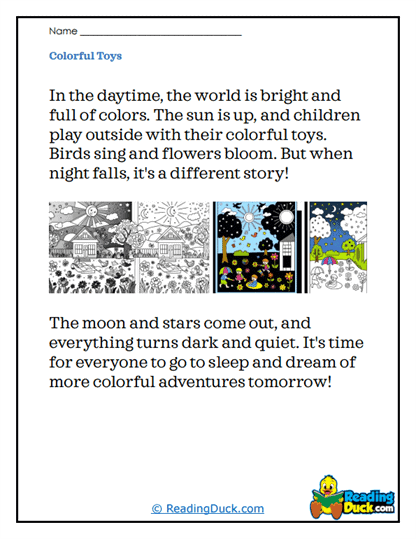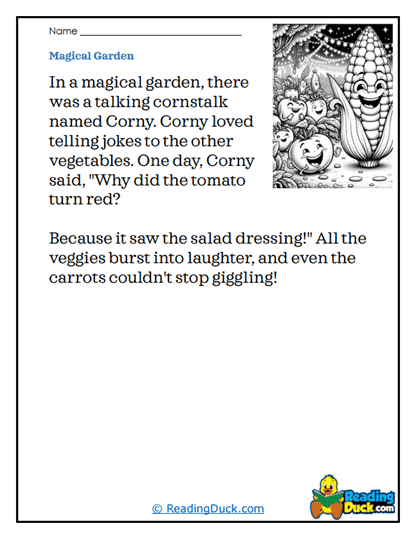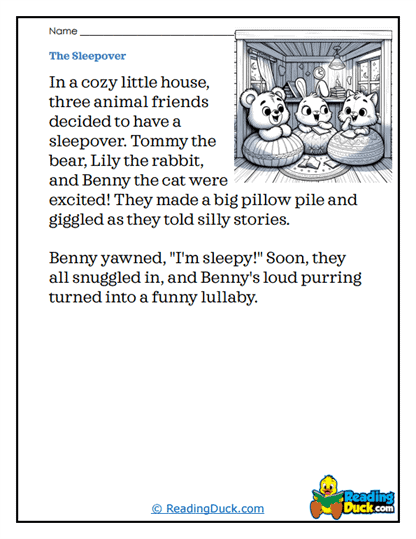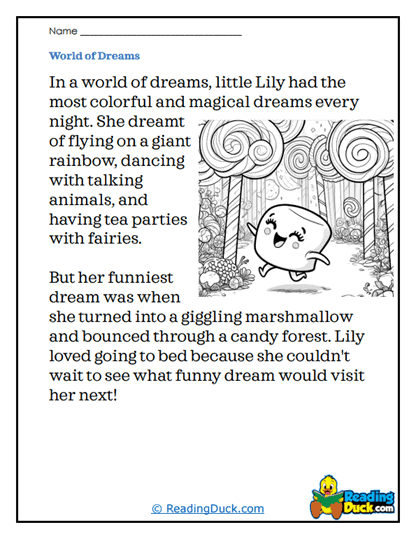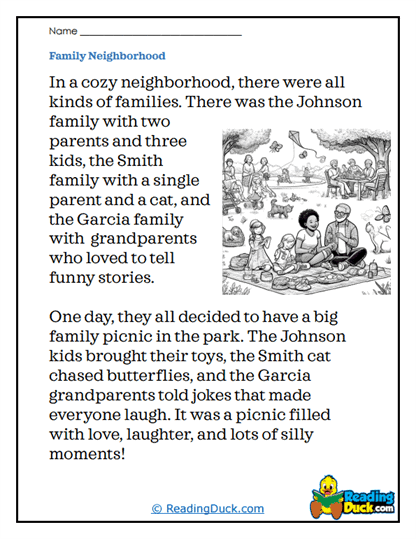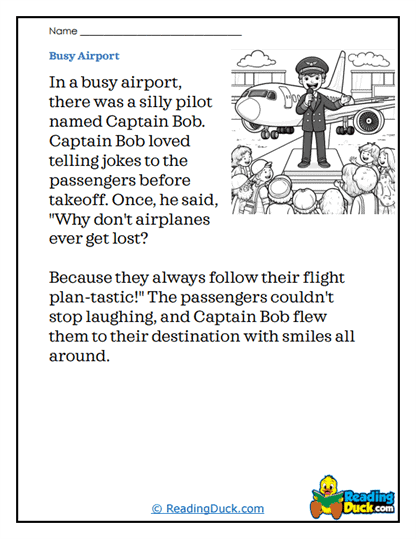Kindergarten Worksheets
About Our Kindergarten Reading Comprehension Worksheets
When implemented thoughtfully and consistently, reading comprehension worksheets can significantly enhance a young child’s ability to read and understand text, laying a solid foundation for future academic success. By creating an engaging, supportive, and progressively challenging learning environment, educators and parents can help children develop the skills and confidence they need to become proficient readers.
The worksheets found above are here to help young learners develop foundational reading skills. These worksheets typically feature a variety of exercises that are intended to enhance a child’s ability to understand and interpret text. They are crucial in the early stages of literacy development, as they not only focus on the mechanics of reading but also on comprehension, which is the ultimate goal of reading.
Types of Reading Exercises
1. Simple Sentences and Short Stories
One common type of exercise found on kindergarten reading comprehension worksheets includes simple sentences or short stories. These are crafted with basic vocabulary and straightforward sentence structures to ensure that they are accessible to young readers. For instance, a worksheet might feature a short story about a dog and its daily activities. Following the story, there would typically be questions that test comprehension, such as "What is the dog’s name?" or "What does the dog like to do?"
2. Picture-Based
Another prevalent type of exercise involves pictures paired with sentences or story excerpts. These worksheets might present a picture and ask students to match it with the correct sentence or story part. This type of exercise helps students associate words with images, reinforcing vocabulary and aiding memory retention. For example, a worksheet could show an image of a cat playing with a ball and ask students to choose the sentence that describes the picture from a list of options.
3. Fill-in-the-Blank
Fill-in-the-blank exercises are also common on these worksheets. They present sentences with missing words and provide a word bank for students to choose from. This type of activity encourages children to think critically about context and word choice, enhancing their understanding of sentence structure and meaning. An example might be a sentence like "The ____ is big and red," with a word bank including "dog," "cat," "car," and "apple."
4. Sequencing Activities
Sequencing activities help students understand the order of events in a story. These exercises might involve a series of pictures or sentences that students need to arrange in the correct order. Sequencing is an important comprehension skill as it helps students grasp the narrative flow and logical progression of events in a text. A worksheet might provide a simple story broken into several parts and ask students to number the parts in the order they occurred.
5. Matching
Matching exercises can involve pairing words with pictures or matching sentences to their corresponding images. These activities help reinforce vocabulary and comprehension by requiring students to make connections between visual and textual information. For instance, a worksheet might present images of various animals and sentences describing their actions, asking students to draw lines connecting the correct pairs.
6. Question and Answer
These worksheets often include direct questions about the text that students have read. These questions can range from literal (e.g., "What color is the cat?") to inferential (e.g., "Why do you think the cat is happy?"). Answering questions about a text helps students practice retrieving information and thinking critically about what they have read.
The Main Benefits of These Worksheets
1. Building Vocabulary
Kindergarten reading comprehension worksheets introduce new words in a meaningful context, which helps students expand their vocabulary. By encountering new words within stories or sentences, children learn not only the definitions but also how to use these words appropriately in sentences.
2. Enhancing Memory and Recall
These worksheets help improve memory and recall abilities. As children read and re-read texts, answer questions, and engage in activities like sequencing, they practice retaining and retrieving information. This repetitive exposure helps solidify their understanding and recall of the material.
3. Developing Critical Thinking Skills
Exercises like fill-in-the-blank and question-and-answer sections encourage students to think critically about the text. They learn to infer meaning, predict outcomes, and draw conclusions based on the information provided. These skills are crucial for deeper comprehension and analytical thinking.
4. Improving Attention to Detail
Comprehension worksheets require students to pay close attention to details within the text. Whether they are identifying specific information to answer questions or matching sentences to pictures, these activities help children develop a keen eye for detail, which is essential for effective reading and comprehension.
5. Promoting Sequential Thinking
Sequencing activities on these worksheets help students understand the logical order of events in a story. This understanding is fundamental to comprehending more complex narratives as they progress in their reading abilities. Knowing how to sequence events also aids in writing skills, as students learn to structure their own stories coherently.
6. Encouraging Independent Learning
By engaging with these worksheets, students gradually become more confident and independent readers. The structured activities provide a clear framework for learning, allowing children to practice and master skills at their own pace. As they complete more worksheets, they build confidence in their reading abilities.
Practical Implementation
To effectively implement these worksheets in a kindergarten setting, it is essential to consider a few practical aspects:
1. Gradual Increase in Complexity
Worksheets should start with very simple texts and exercises, gradually increasing in complexity as students become more proficient readers. This progression helps to build confidence and ensures that students are consistently challenged but not overwhelmed.
2. Integration with Other Activities
Reading comprehension worksheets should be integrated with other classroom activities. For example, after completing a worksheet, students might engage in a related craft or role-playing activity that reinforces the story or concepts learned. This multi-modal approach helps to solidify understanding and keep learning engaging.
3. Regular Practice
Regular practice with reading comprehension worksheets is crucial for reinforcing skills. These worksheets can be used as part of daily reading routines, homework assignments, or even as part of literacy centers where students rotate through different activities.
4. Parental Involvement
Encouraging parental involvement can also enhance the effectiveness of these worksheets. Providing parents with copies of worksheets to do at home, along with guidance on how to support their child’s reading development, can create a more holistic learning experience.
5. Feedback and Encouragement
Providing positive feedback and encouragement is essential for motivating young learners. Teachers should celebrate successes and provide gentle guidance on areas needing improvement. This supportive environment helps build a child’s confidence and enthusiasm for reading.
The Kindergarten Reading Curriculum
In the kindergarten curriculum, students work on a variety of reading skills that form the foundation for their future literacy development. These skills are essential for building the ability to read fluently and comprehend texts effectively. Here’s a detailed explanation of the key reading skills that kindergarten students focus on:
1. Phonemic Awareness
Phonemic awareness is the ability to hear, identify, and manipulate individual sounds (phonemes) in spoken words. It is a crucial skill for learning to read because it underpins the ability to decode words. In kindergarten, students engage in activities that help them recognize and produce rhyming words, segment and blend sounds in words, and identify the initial, medial, and final sounds in simple words.
2. Phonics
Phonics involves the relationship between letters and sounds. Kindergarten students learn to associate letters with their corresponding sounds, which is essential for decoding words. Activities might include letter-sound matching, practicing the sounds of consonants and vowels, and blending sounds to form simple words. For instance, they might learn that the letter "b" makes the /b/ sound and practice blending sounds to read words like "bat" and "ball."
3. Alphabet Knowledge
Recognizing and naming letters is a fundamental skill in kindergarten. Students learn to identify both uppercase and lowercase letters and understand that each letter has a name and a specific sound. They practice identifying letters in various contexts, such as in the alphabet song, through alphabet books, and with letter flashcards.
4. Print Awareness
Print awareness refers to understanding how print works. Kindergarten students learn that print carries meaning and that reading occurs from left to right and top to bottom. They also recognize the difference between letters, words, and sentences. Activities might include pointing out words and sentences in books, recognizing the spaces between words, and understanding that print corresponds to spoken language.
5. Vocabulary Development
Building a robust vocabulary is critical for reading comprehension. In kindergarten, students are introduced to a wide range of words through reading aloud, conversations, and various activities. They learn the meanings of new words and how to use them in context. Teachers often use thematic units, picture books, and interactive read-alouds to introduce and reinforce new vocabulary.
6. Listening Comprehension
Listening comprehension is the ability to understand and interpret spoken language. This skill is developed through listening to stories, following directions, and engaging in discussions about read-aloud books. Students practice answering questions about stories, retelling narratives, and making predictions about what will happen next in a story.
7. Oral Language Skills
Oral language skills involve speaking and listening abilities. In kindergarten, students engage in activities that promote speaking clearly, using complete sentences, and expanding their vocabulary. They participate in discussions, storytelling, and answering questions, which helps develop their expressive and receptive language skills.
8. Comprehension Strategies
Even at the kindergarten level, students begin to learn basic comprehension strategies. These include making predictions, asking and answering questions about the text, and making connections to their own experiences. Teachers model these strategies during read-alouds and guided reading sessions, helping students understand and engage with the text.
9. Story Structure
Understanding the structure of stories helps students grasp how narratives are organized. Kindergarten students learn about the beginning, middle, and end of a story, as well as basic elements like characters, settings, and major events. They practice identifying these elements in stories read aloud and in simple books they read themselves.
10. Fluency
Fluency in reading involves reading text accurately, smoothly, and with expression. In kindergarten, students work on reading simple texts with appropriate pacing and expression. This often involves repeated readings of familiar texts, echo reading (where the teacher reads a sentence and the student repeats it), and choral reading (where the class reads together).
11. Concepts of Print
Kindergarten students learn about the basic concepts of print, such as the directionality of reading (left to right, top to bottom), understanding that words are made up of letters, recognizing punctuation marks, and knowing the parts of a book (cover, title, author, etc.). These concepts help students navigate printed text and understand its structure.
12. Writing Connection
Reading and writing are interconnected, and kindergarten students begin to develop writing skills alongside their reading skills. They practice forming letters correctly, writing their names, and composing simple words and sentences. Activities might include drawing and labeling pictures, writing short sentences about a topic, and participating in shared writing activities where the teacher writes a sentence based on student input.
13. Engagement with Text
Developing a love for reading is an important goal in kindergarten. Teachers create a print-rich environment and provide access to a variety of books and reading materials. Students are encouraged to explore books, participate in story time, and discuss stories. This engagement fosters a positive attitude towards reading and motivates students to become lifelong readers.
14. Decoding and Word Recognition
Decoding is the ability to apply knowledge of letter-sound relationships to read words. Kindergarten students practice decoding simple words using their phonics knowledge. They also work on recognizing high-frequency sight words, which are common words that often do not follow regular phonics rules and need to be memorized. Examples of sight words for kindergarten include "the," "and," "is," and "you."
